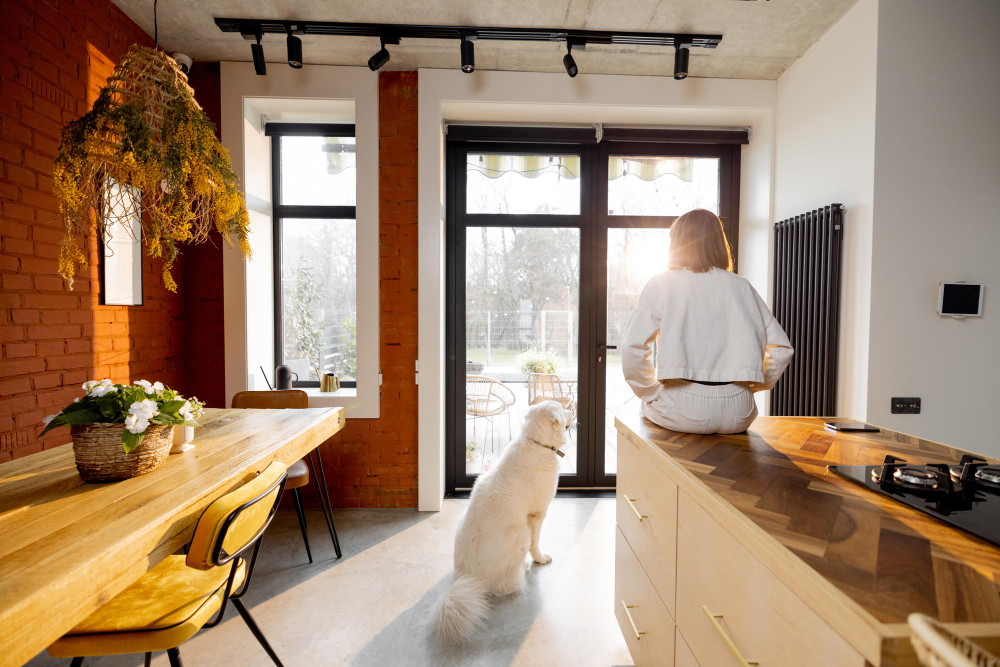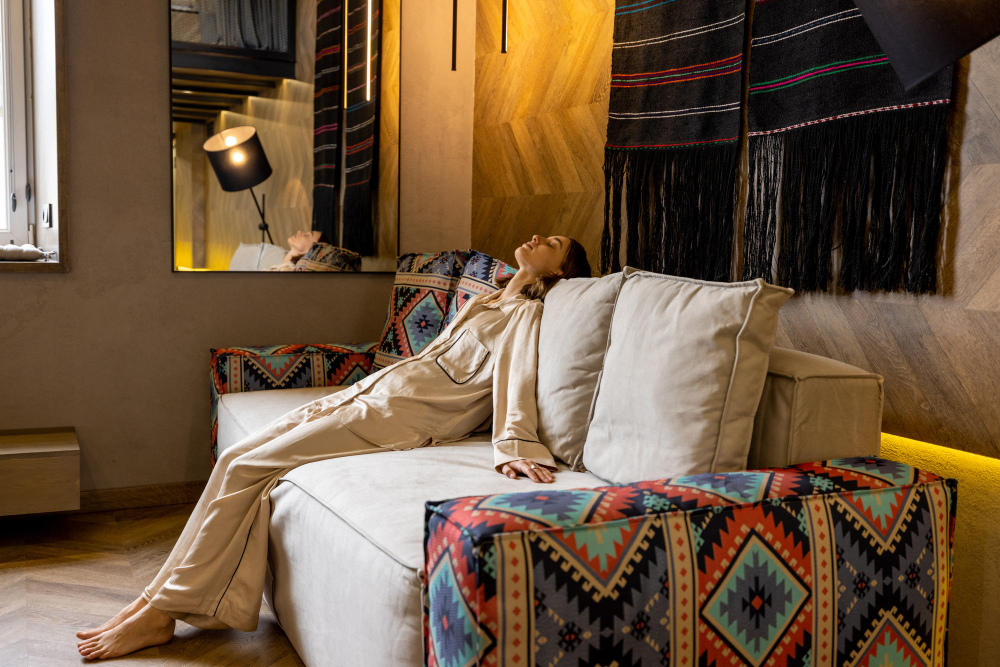Last updated on
As the world becomes increasingly aware of the impact of human actions on the environment, many people are looking for ways to make their homes more eco-friendly. But that doesn’t mean you have to sacrifice style and aesthetics in the process!
In fact, incorporating sustainable practices into your interior design can add a unique touch and elevate the overall look of your space. From using natural materials to choosing energy-efficient appliances, there are endless possibilities for creating a stylish and eco-friendly home.
In this guide, we’ll explore some tips and tricks for designing an interior that’s both beautiful and sustainable. So let’s dive in!
Incorporate Natural Elements

Incorporating natural elements is a key aspect of creating an eco-friendly and stylish interior. By using materials such as wood, stone, and bamboo, you can add a touch of nature to your space while also reducing the use of synthetic materials that harm the environment. These natural elements not only add texture and warmth to a room but also have a smaller carbon footprint compared to their synthetic counterparts.
Additionally, using natural light as much as possible can reduce the need for artificial lighting and save energy. So whether it’s through furniture, decor, or lighting, be sure to bring in elements from nature to create a more sustainable interior design.
Use Eco-friendly Textiles and Fabrics
When designing an eco-friendly interior, it’s important to consider the materials used for textiles and fabrics. Look for options such as organic cotton, hemp, linen, or bamboo for items like bedding, curtains, and upholstery.
For instance, you can choose custom curtains made from organic cotton to add a pop of color and texture to a room while also being environmentally conscious. The curtains can also be made using natural dyes, which are free from harmful chemicals and better for your health.
By choosing eco-friendly textiles and fabrics, you can reduce the negative impact of conventional textile production on the environment while still creating a stylish interior. Ensure to engage professional curtain makers who are familiar with eco-friendly materials and techniques for the best results.
Choose Recycled or Upcycled Materials

Another tip for creating a sustainable interior design is to choose recycled or upcycled materials whenever possible. This can include items such as furniture, decor, and even building materials. For example, you can use reclaimed wood for flooring or furniture, which not only adds character to a space but also reduces the demand for new materials.
Similarly, upcycling old items into something new and functional is a great way to reduce waste and give a unique touch to your interior design. You can repurpose old jars or bottles as vases or use vintage fabrics to create throw pillows. With some creativity, the possibilities are endless!
Invest in Energy-efficient Appliances and Lighting
One of the most significant ways to make an interior eco-friendly is by investing in energy-efficient appliances and lighting. Look for appliances with a high energy star rating that consume less electricity and water without compromising on performance. For lighting, opt for LED bulbs that have a longer lifespan and use less energy compared to traditional incandescent bulbs.
Not only do these choices reduce your carbon footprint, but they also save you money in the long run through lower utility bills. And with advancements in technology, eco-friendly options for appliances and lighting are now more accessible and affordable than ever before. So be sure to make this investment for both the environment and your wallet.
Use Low VOC Paints and Finishes
When it comes to painting your interior walls or adding finishes to furniture, choose low VOC (volatile organic compound) options. These paints and finishes have lower levels of harmful chemicals, making them better for both the environment and your health. They also have a lower odor, making them more pleasant to use.
In addition to low VOC options, you can also consider using natural paints made from materials like clay or milk protein. Not only are they eco-friendly and non-toxic, but they also offer unique textures and colors that can add a one-of-a-kind touch to your interior design. So be mindful of the products you choose when adding color and finishes to your space.
Opt for Sustainable Furniture Pieces
Furniture is a significant aspect of interior design, and choosing sustainable options can make a big impact on the environment. Look for furniture made from natural or recycled materials such as wood, bamboo, or metal. You can also opt for pieces that have been certified by organizations like the Forest Stewardship Council (FSC) for their sustainable production practices.
Consider investing in timeless and durable pieces that will last longer, reducing the need for frequent replacements. You can also support local artisans who use eco-friendly materials and techniques to create unique furniture pieces. By incorporating sustainable furniture into your interior design, you not only reduce waste but also add character and charm to your space.
Bring in Plants for Natural Air Purification
Plants not only add a touch of greenery and life to a room but also have many benefits for the environment and your health. They act as natural air purifiers, absorbing harmful toxins and producing oxygen in return. This can help improve the air quality in your home, making it a healthier place to live.
Incorporate various plants throughout your interior design, from small succulents on shelves to larger potted plants in corners. Consider low-maintenance options like spider plants or snake plants that can thrive in different lighting conditions. With so many plant varieties to choose from, you can also have fun and add a unique touch to your space through different shapes, textures, and sizes.
Consider Sustainable Flooring Options
Last but not least, the type of flooring you choose can also have a significant impact on the sustainability of your interior design. Look for options like bamboo, cork, or reclaimed wood that are renewable and have a lower environmental impact compared to traditional hardwood floors. You can also opt for carpet tiles made from recycled materials or natural fibers like wool.
Additionally, consider using rugs made from sustainable materials such as jute or seagrass to add texture and warmth to a room. And if you do choose hardwood floors, make sure they are certified by the FSC for their responsible sourcing practices. By making informed choices about your flooring, you can contribute to creating a more eco-friendly and stylish interior.
Creating a stylish and eco-friendly interior is not only possible but also essential in today’s world. By incorporating natural elements, using eco-friendly textiles and materials, and making conscious choices about appliances, lighting, paints, furniture, plants, and flooring, you can design a space that is both aesthetically pleasing and environmentally responsible.
Remember to do your research and seek out certified products and professionals who specialize in sustainable practices. With these tips and tricks, you can make a positive impact on the environment while also creating a unique and beautiful home.
Table of Contents




